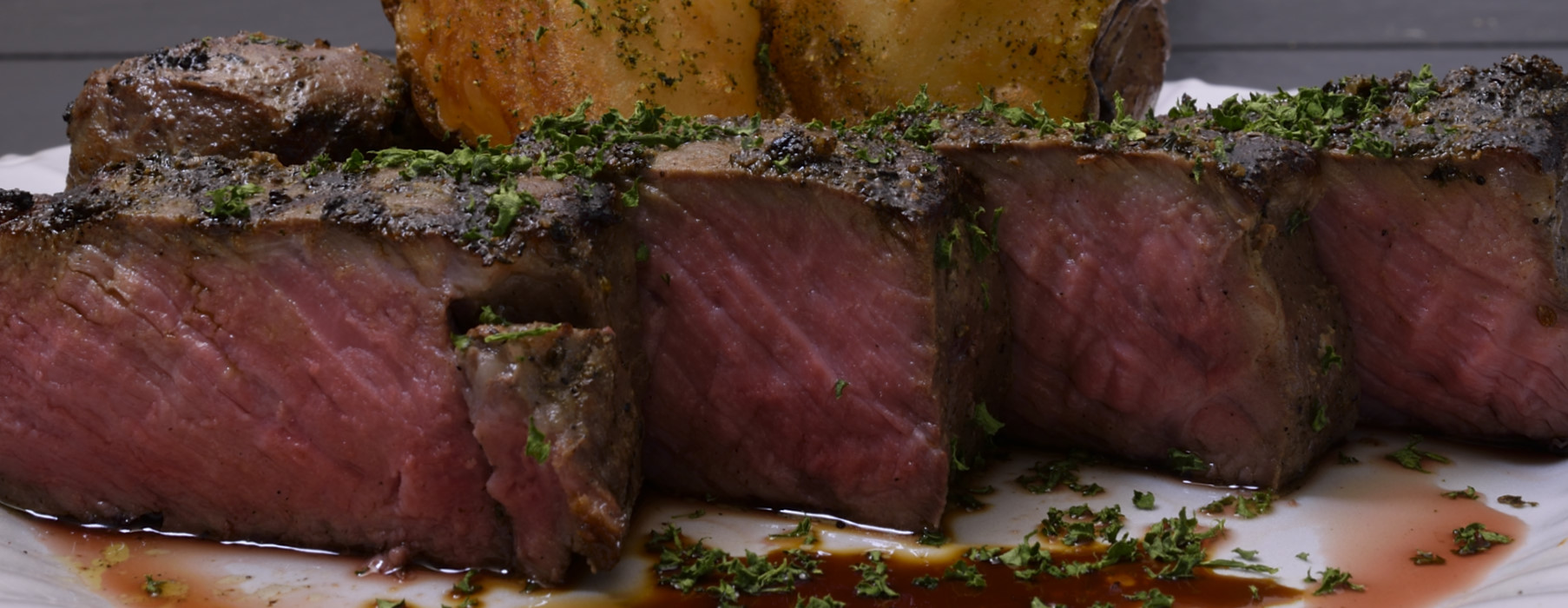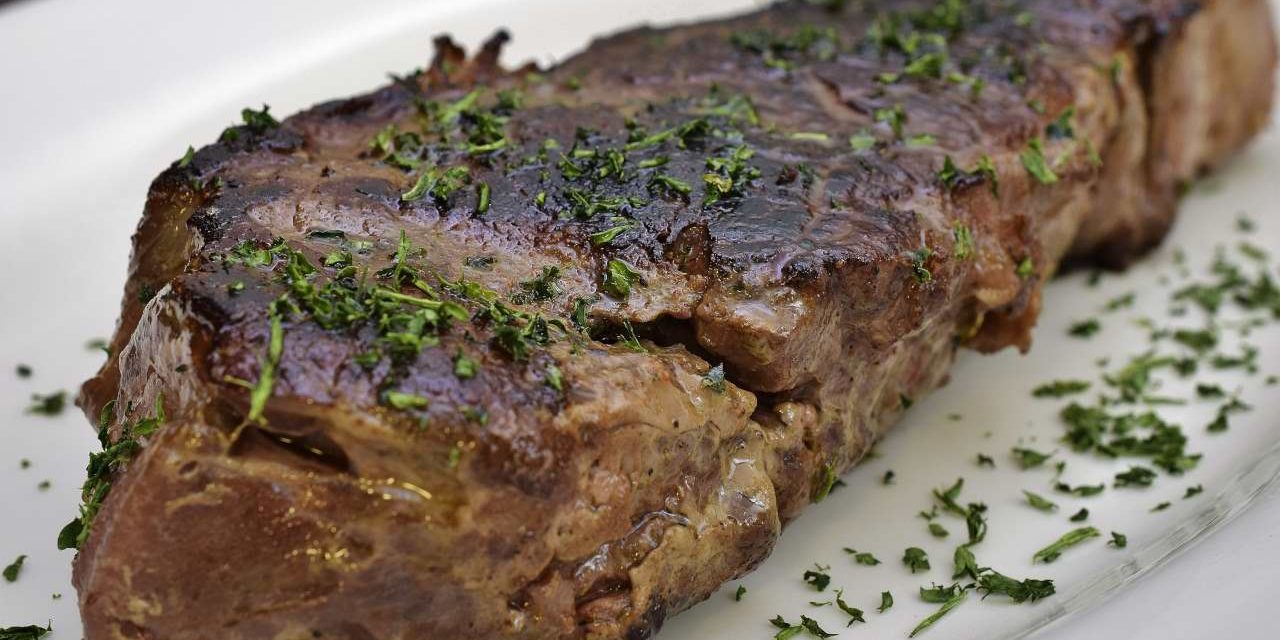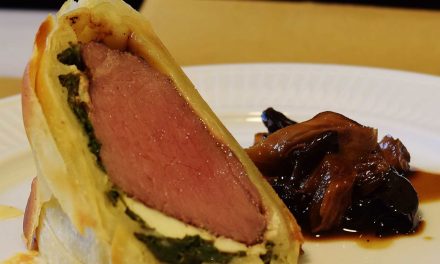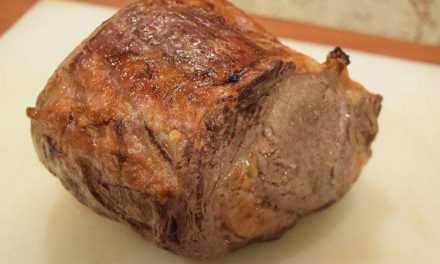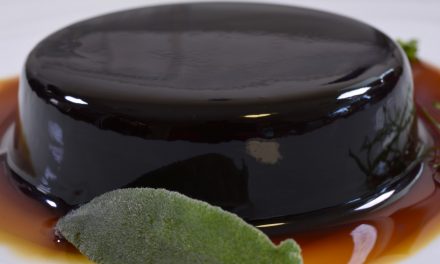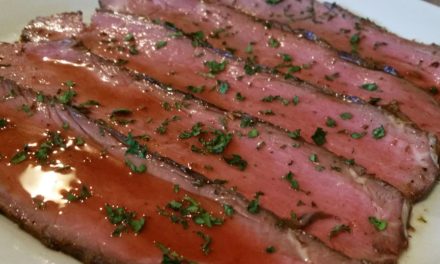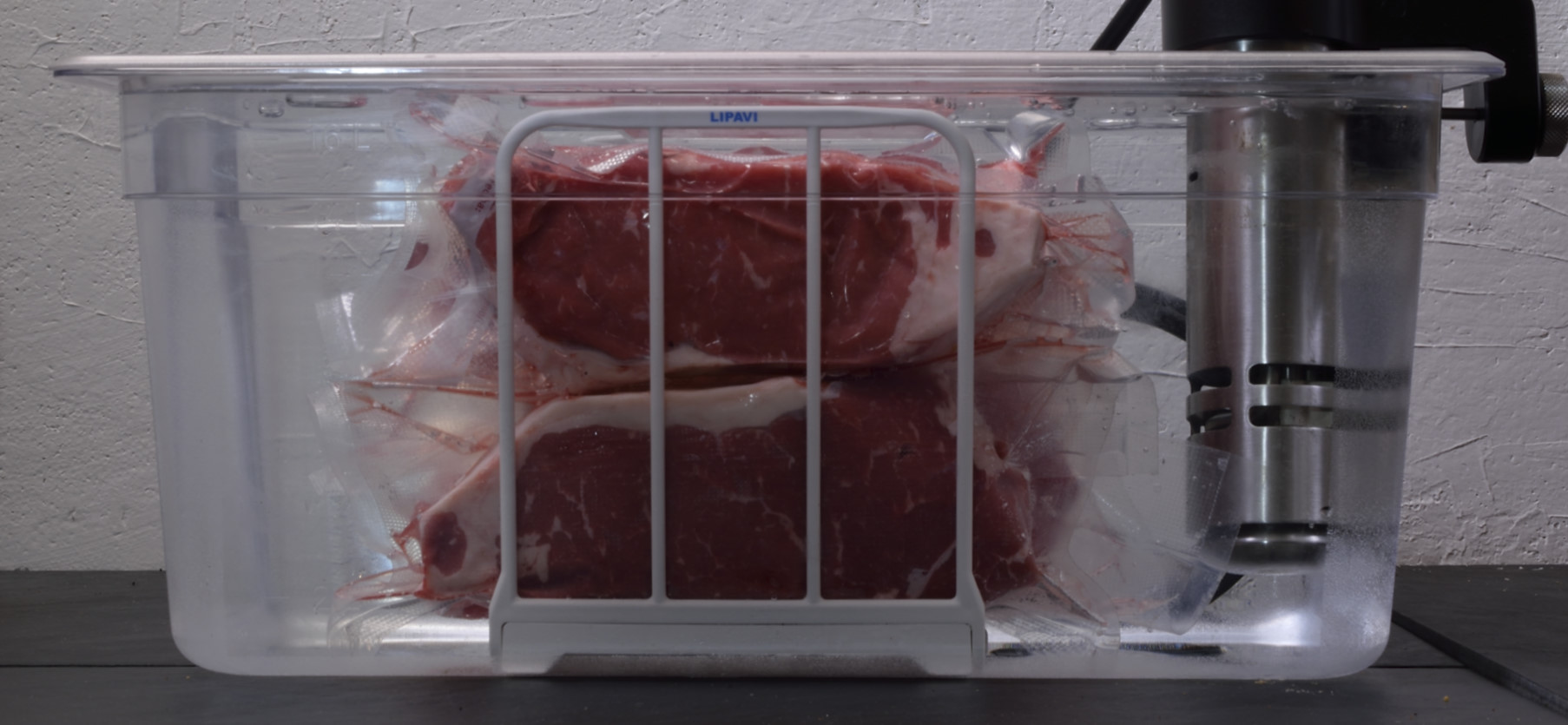
Call it what you will, New York, Kansas City, Strip, Strip loin, entrecote (incorrectly), the big half of the T-Bone/Porterhouse is under-used as it is. Rib eyes dominate the market these days and people who quest for tender and gristle free lean towards the filet/tenderloin. That leaves the strip loin a little lonely and misunderstood. Most people don’t realize that the muscle itself is the continuation of the rib eye muscle (or vice versa), without all the surrounding layers of other flaps and dorsals.
Both the strip loin and the rib eye come from along the the spine of the animal between the chuck/shoulder and the hip, outside of the bone and just under the skin. That seems like it would be tough and overworked, and in a human, it would be–because we stand on our hind legs. In wild game, this whole group of muscles is whimsically called the back strap, with most hunters unaware of the correspondence to the other-named cuts of beef. The fact is, the anatomy of most mammals is mind-numbingly similar. You and I have rib eyes and strip loins, and even briskets, but of course that’s not what they’re called in Papua, New Guinea. Not to digress.
It’s a good idea to buy strip loins whole. They’re a little smaller than whole bone-in rib eyes, so they are less of an investment. Some unscrupulous butchers needle the strip loins as they cut them into steaks, but if you buy the strip loin in the packer’s cryovac, this is less likely to have happened. The yield is better than a whole top sirloin. The steaks are easy to cut, and easy to cut thick. Moving on.

This first pic is the whole thing, and it would be from the left side of the steer/heifer, from their perspective–not from ours. It is also upside down–sort of. The visible narrow surface was connected directly to the spine. What appears to be the “top” is the surface that was connected to the bones, which are ribs, and are shorter than the ribs on the rib eye, but are not called short ribs, because that’s something else entirely. I suppose that butchers have purposely made names counter-intuitive for the sake of their job security. The bottom surface, not in view, is the fatty side. It’s fatty because it really was just under the skin/hide. For that matter, many people don’t know that the skin and the hide are the same thing.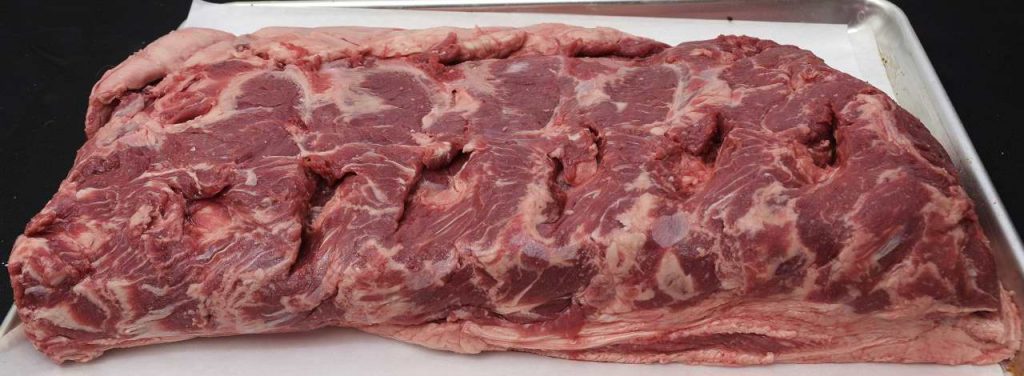
Above is the view of the same thing from a different angle. Those indentations that you see are where the rib bones were connected. Think about this. Our longest ribs form the cage that encloses our lungs and hearts–just like the beast. Hence the bone-in “tomahawk” rib eye. There is no tomahawk New York, because we don’t have ribs surrounding our abdomens, and neither does old Bessie here.
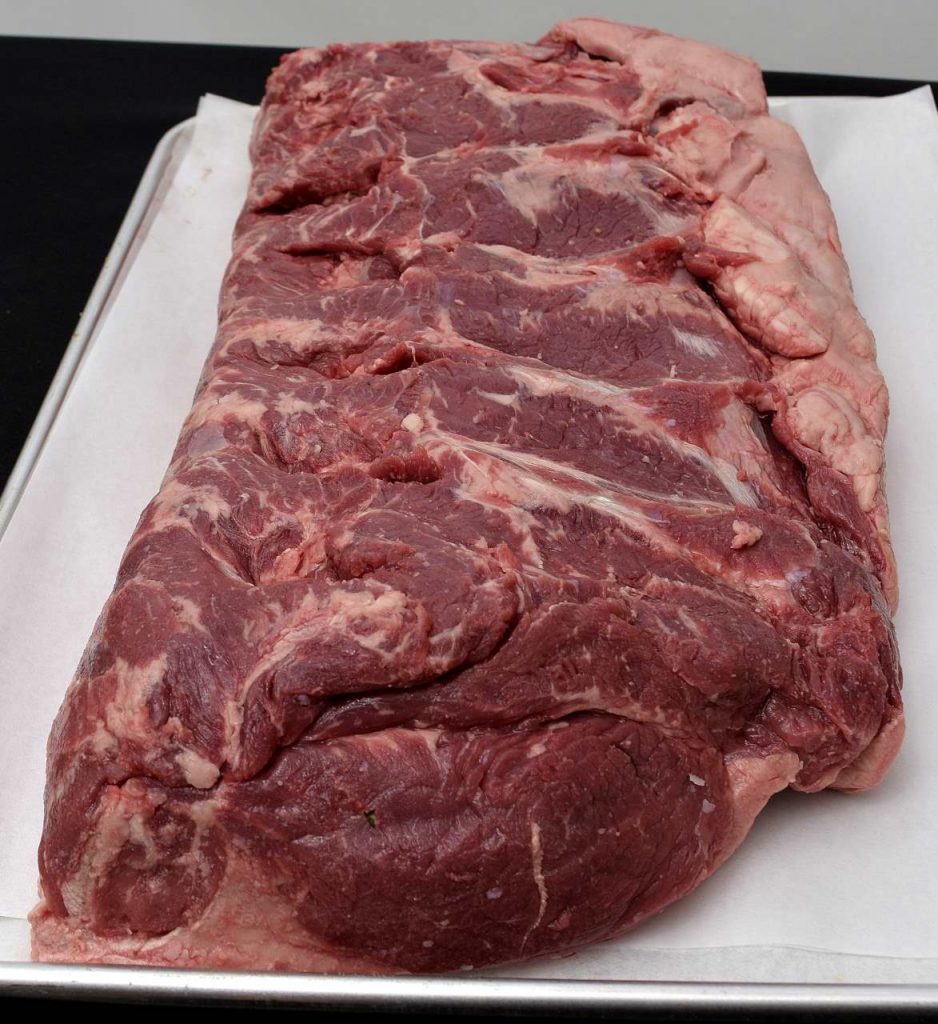
Above, we spun it around so you’re looking at the rump end of the animal–you can see that the face of it doesn’t really look at all like a New York steak, because it’s becoming the top sirloin. This is the nerve end, the tough end, the less desirable end. Lots of names, more on that in a minute.
It’s actually two cuts of meat, at least, you can see–the bottom is quite oval in shape, and the top is kind of flap like. Both tender, but the connecting membrane is very tough.
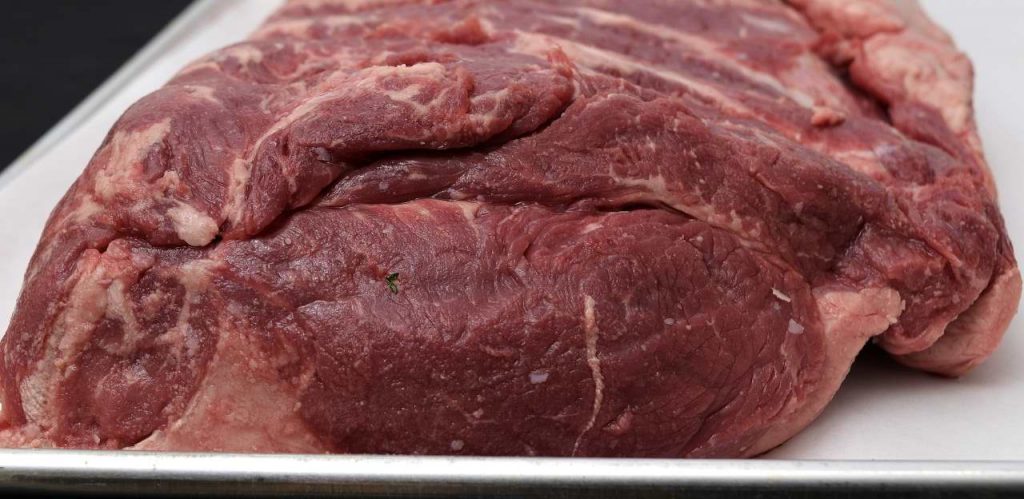
If you proceed from here at the rear, the strip loin eventually becomes the rib eye. Below is where the New York officially connects to the rib eye–basically separating the rear half of the animal from the front half. 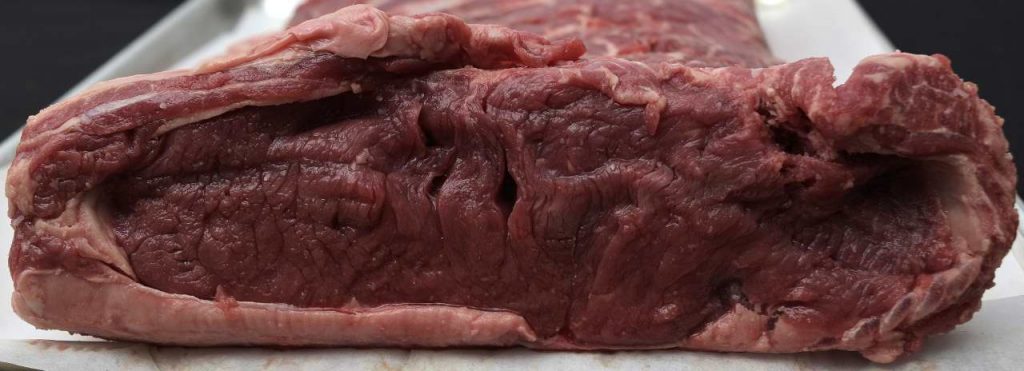
Below, from above, it’s all starting to make sense.
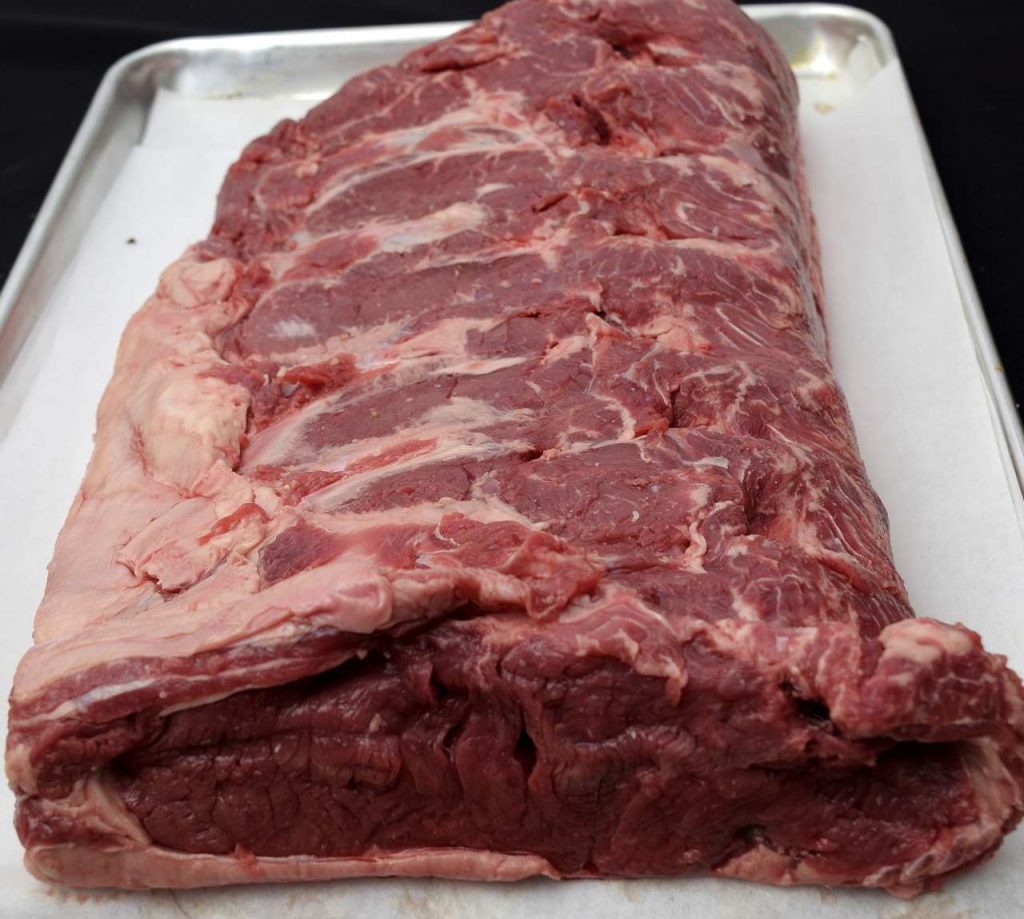
Again, that transitional cut. This cut of the New York and the rib eye that it intersects with are the least desirable, in my opinion. This spot gets a certain amount of work because it supports the most weight of the entire muscle. The most tender rib eye is the one from all the way up front, where it’s connected to the chuck. That’s where the Delmonico steaks are.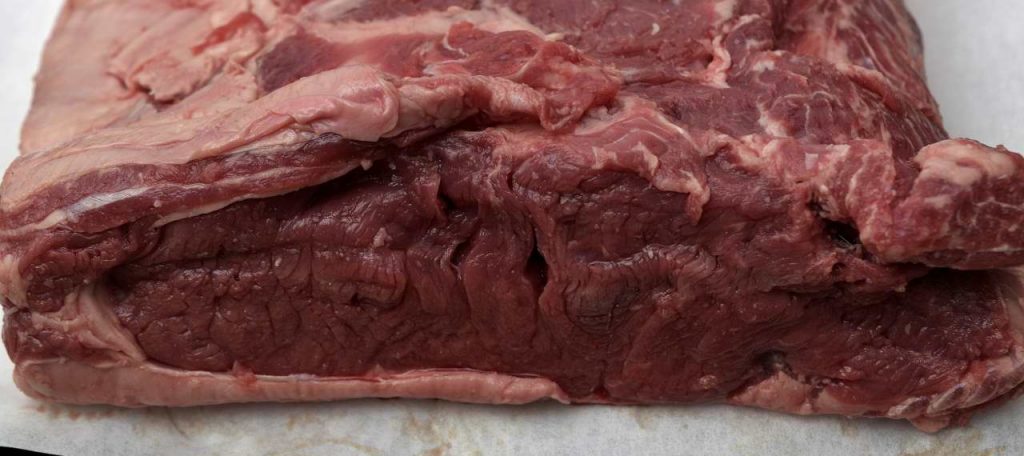
So, we’re going to separate the front end, the good end, from the rear end, the nerve end. If you look at the fatty side, you can see a little lump start to appear about three fourths down the length of the Striploin. That’s that oval piece I showed you, starting to take shape. You cut the whole thing in two right where you see that lump starting to appear, and you get this:
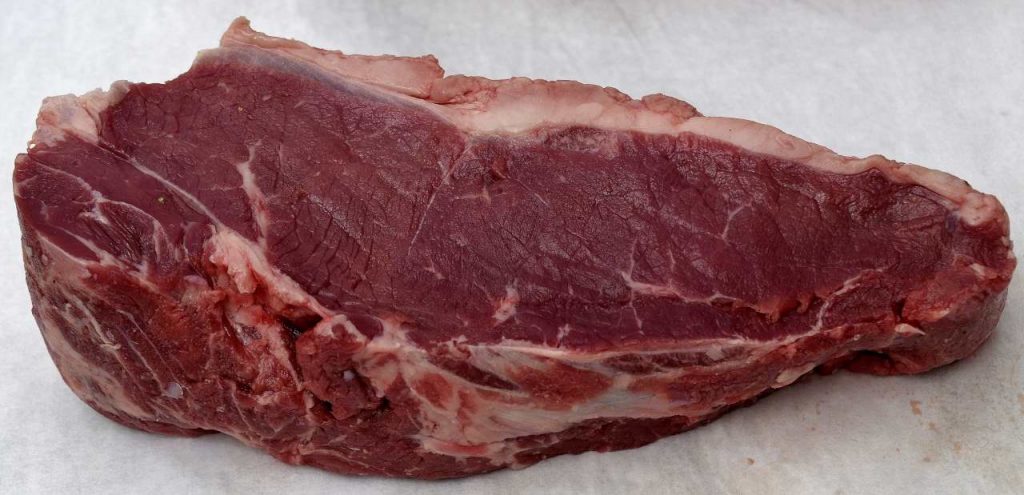
If you look at the top center, you can see that I pretty much nailed it–just the faintest hint of that weird muscle starting to show–still looks like a basic New York, and this is what you will see in the market packaging in the butcher’s case. Great. Beautiful. You take it home, rip off the plastic, flip the steak over, and, guess what? You see this:
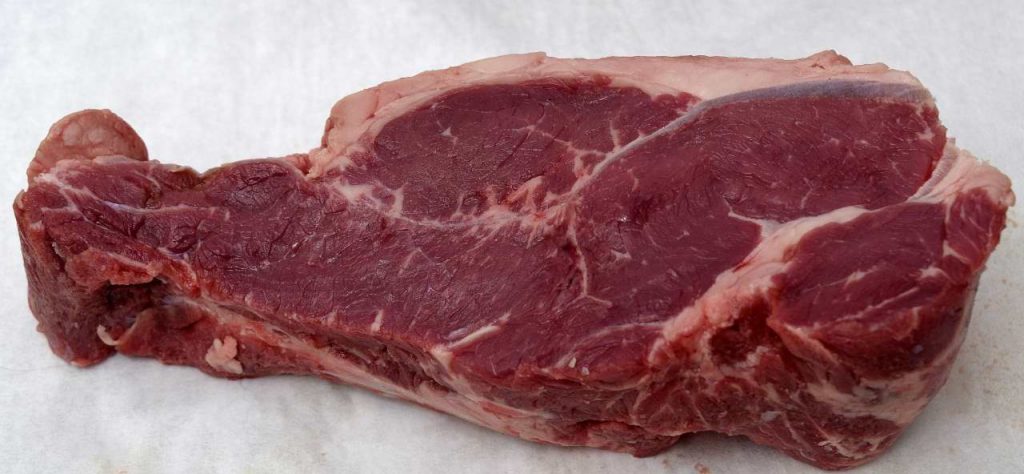
Curses. Joe the butcher screwed me again. Not really. What do you expect him to do? Marketing is packaging, and packaging is marketing. Joe has a family, too, caveat emptor.
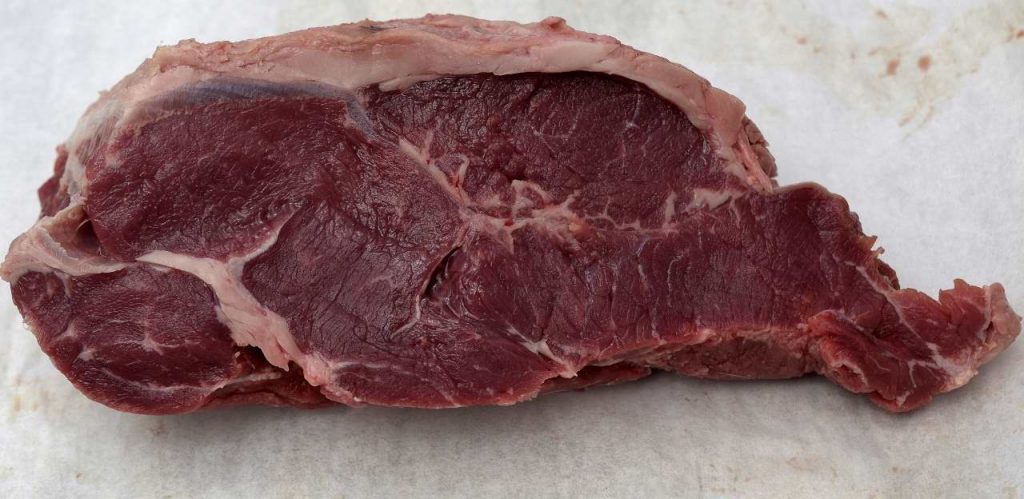
The farther we get down that rump end, the stranger the shape gets, and the bigger that oval piece. This is the problem with Porterhouse steaks. While the Porterhouse displays the largest proportion of the tenderloin on the one side, the other side is this inferior cut. Again, marketing. The bone in the porterhouse does nothing. It’s a nice slice of tenderloin on one side that cooks really fast, and a crummy strip loin on the other that takes forever to get tender. Looks cool, though. Sigh. If you really like your steak well done–and there’s no shame in that–you will love the porterhouse. Don’t be afraid to return it to the kitchen for more fire, either. You’re paying for it aren’t you? Cooks can be real jerks about cooking steaks well done. Not because they’re snobs. Because a well done steak takes longer than a rare one, and cooks want it all over with ASAP, they’re dying for a cigaret. Really.
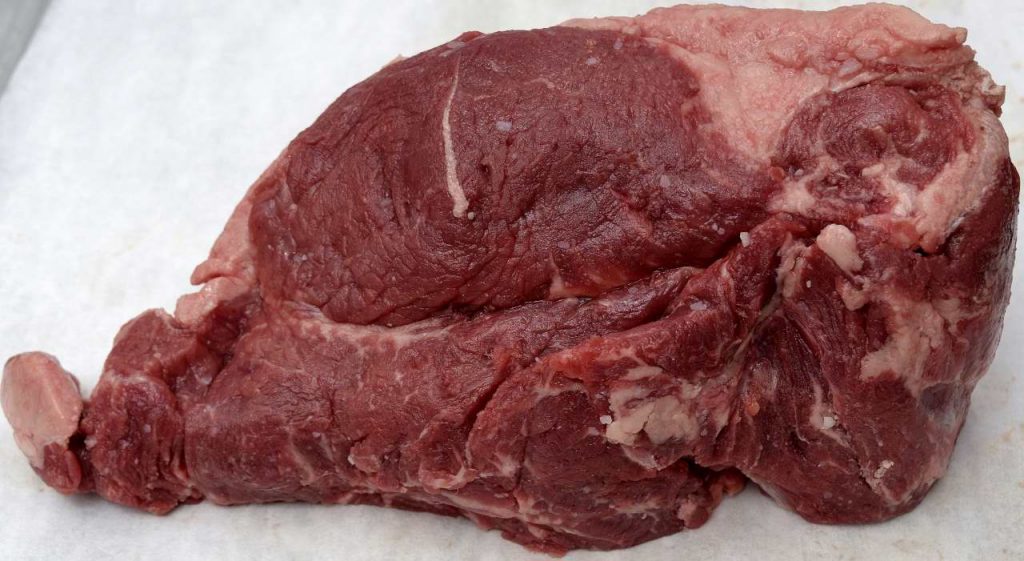
Here we are again, all the way to the end. You can clean this up and use it for stroganoff after you remove all that tough stuff. You can sv it for a long time and call it London Broil. I will share a secret with you. It makes good ground beef. Let it go. Come to the dark side.
Moving on, below, we have the well trimmed, cleaned up, center cut with all the undesirable stuff removed. The white skin has been trimmed back, and we see the characteristic tender silver skin that is always on a New York, or, at least, it should be or else we wouldn’t recognize it.
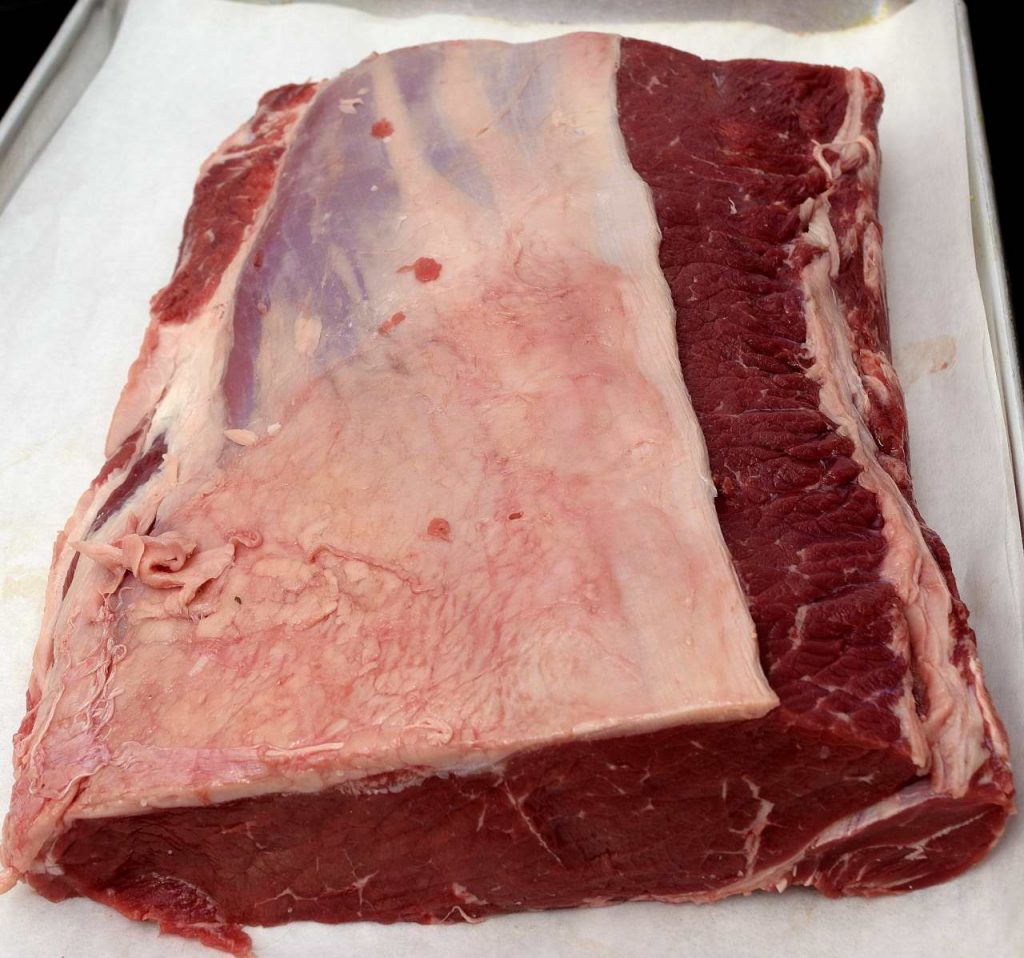
You can see the “other” side of where I cut it in half to get rid of the nerve end, just that little tiny strip up at the top, above and below.
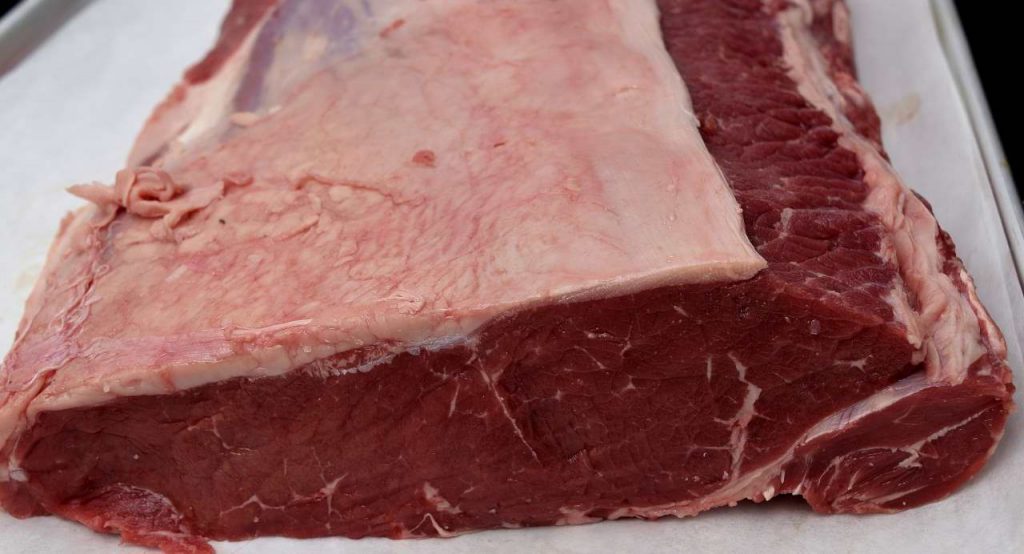
and then again, below, the rib eye end…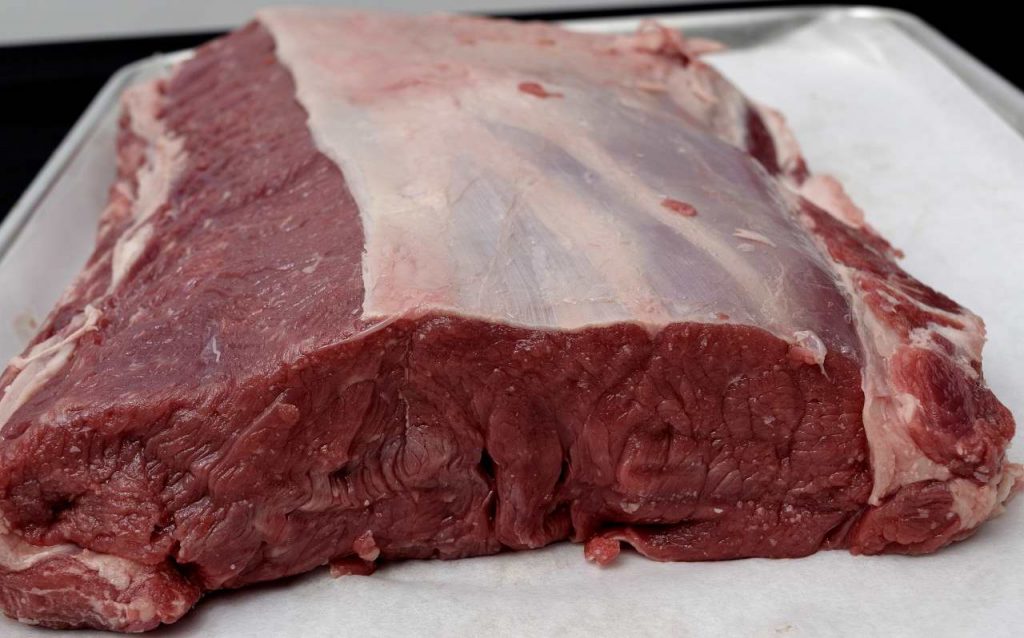
That section is going to give us about 9 lbs of viable steak. The whole thing weighed in at almost 14 lbs, and I got a deal at $4.99/lb. I think the Chinese used to buy a lot of American beef before the advent of tariffs, but we’re not going to go into that.
Here’s what I did. First, I cut six steaks, almost 20 oz each, because, well, I like a big steak, what’s the point of eating a 7 ozer?
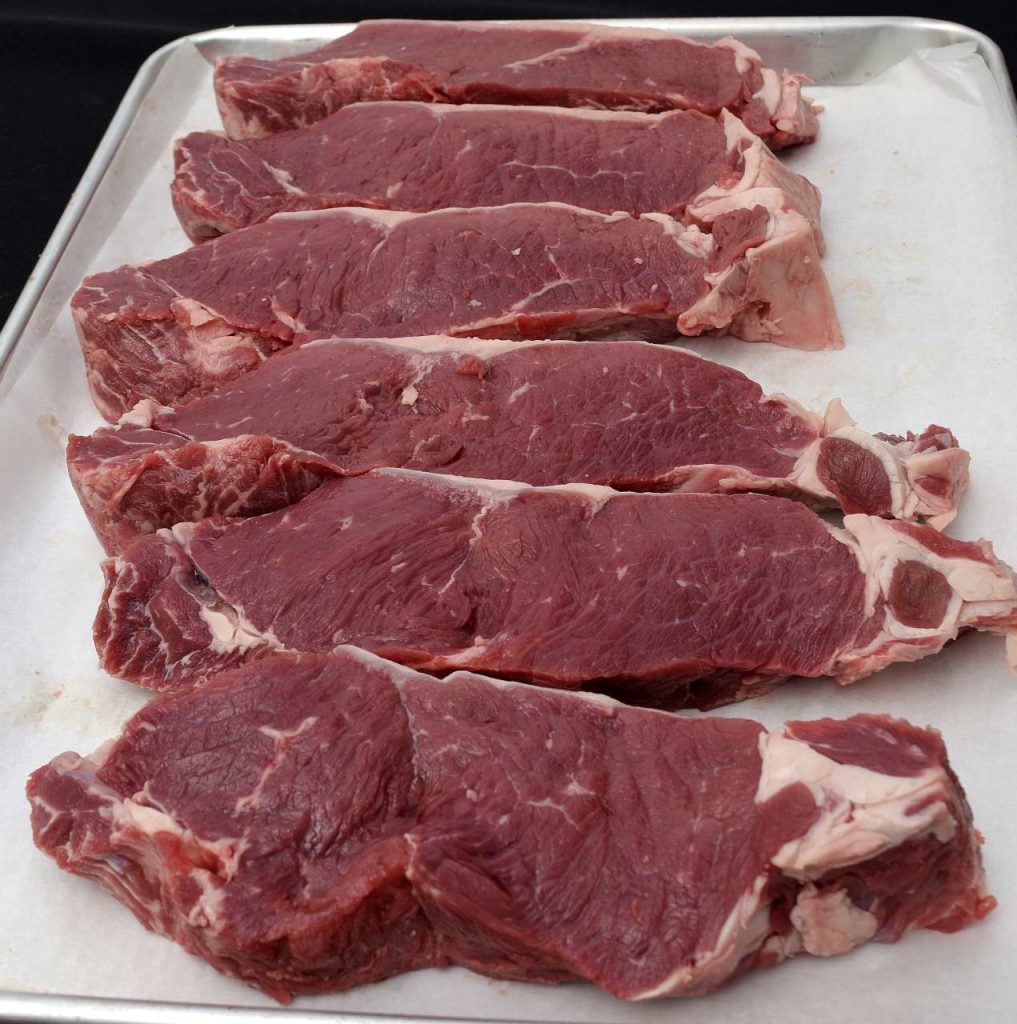
That left me with that one, rib eye end piece, closer to 30 oz. This is a thing. Instead of slicing it into two steaks, I cut it in half the other way to make two, thick steaks. This is an old timey thing that appears to be coming back. It’s called a New York Mignon, because it looks like a filet, with the tenderloin tail still attached the way we used to serve filets in the old days when they were $9 for the four course meal.
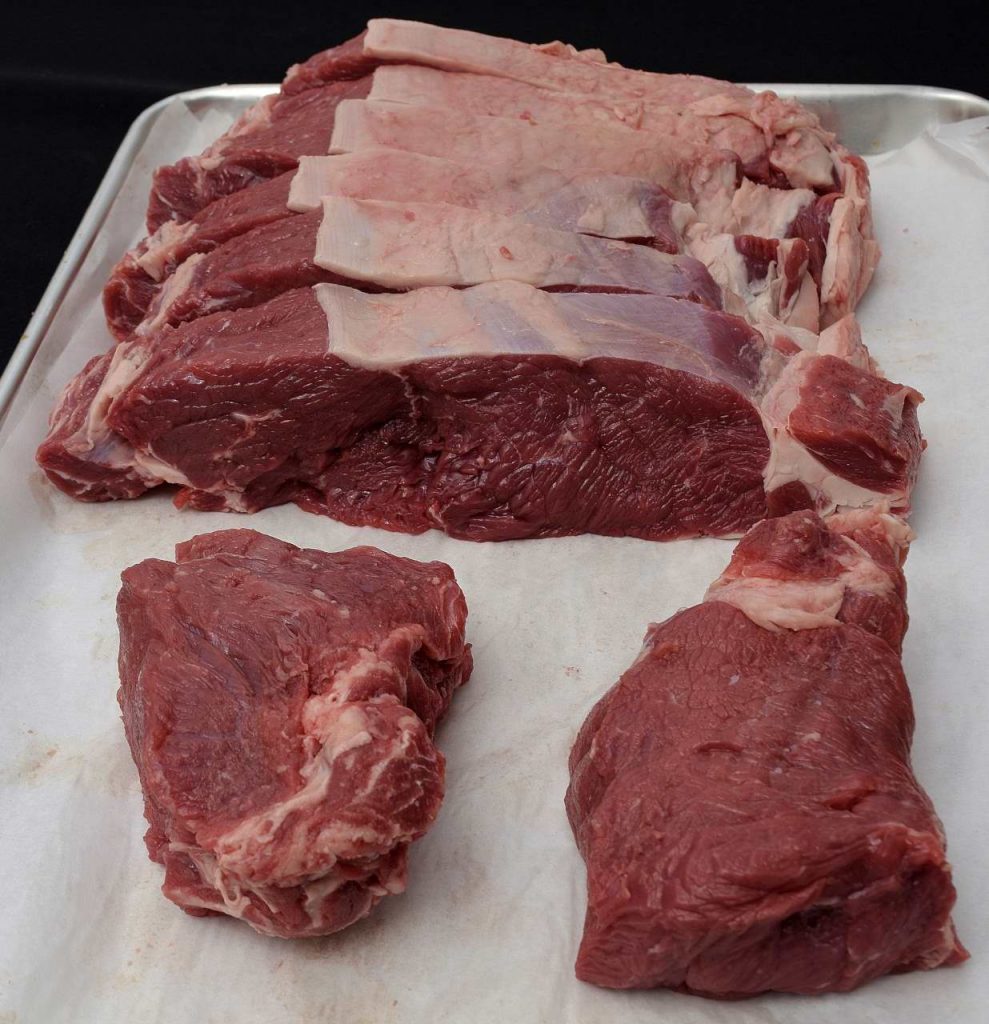
They really do look like cuts from the thick end of the tenderloin.
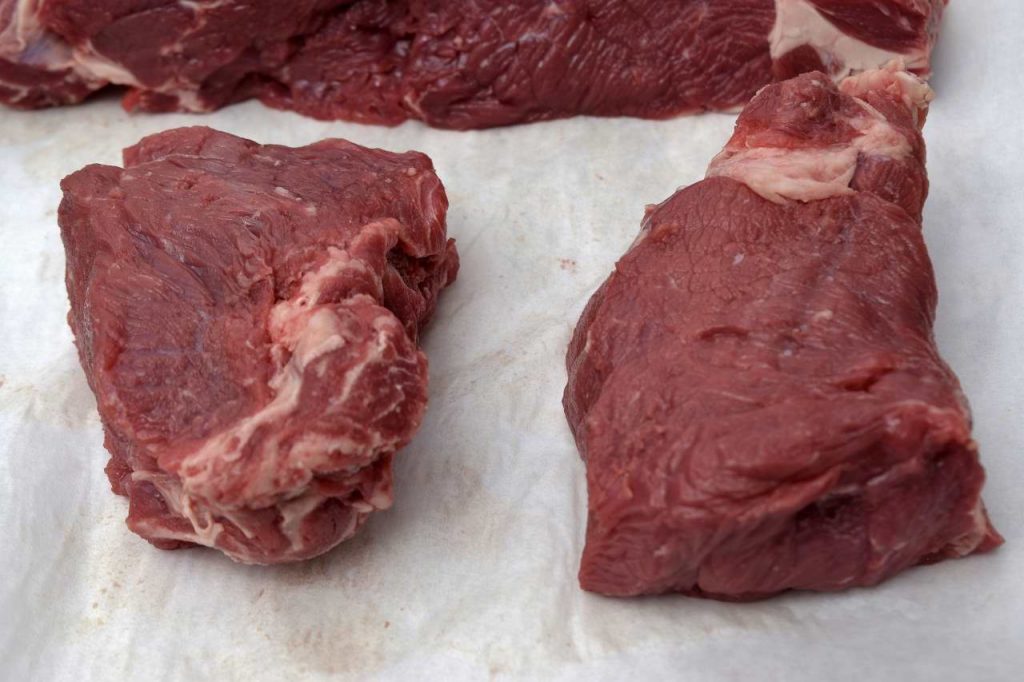
Really, Really, they do. Pretty cool.
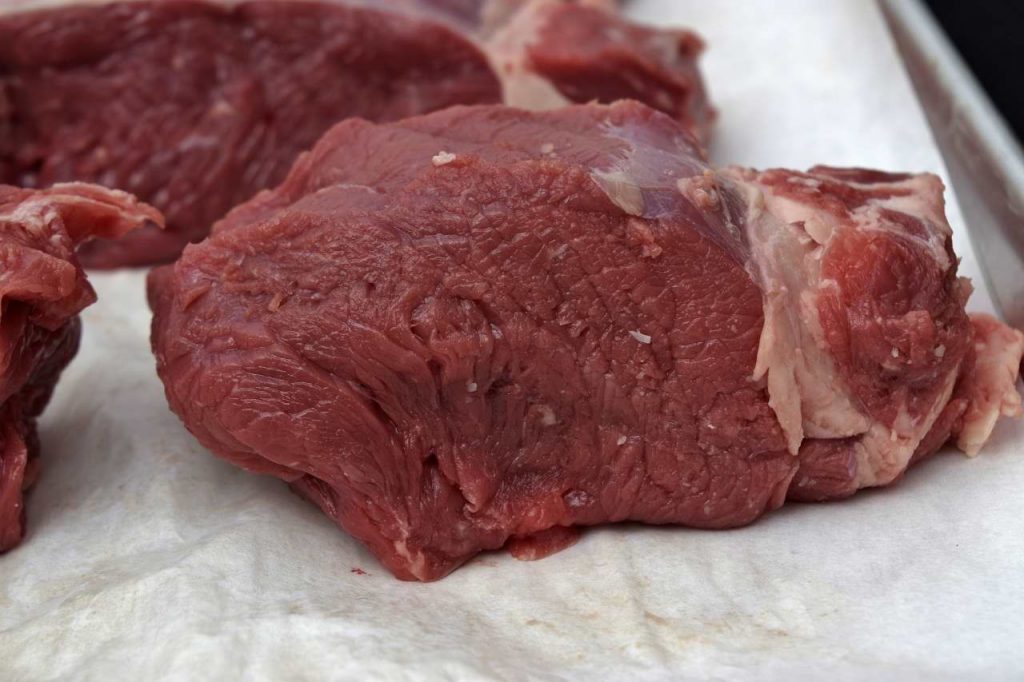
Kinda smash them down the way they do with thick filets. We’ll get ’round to processing some here in the next couple of days…
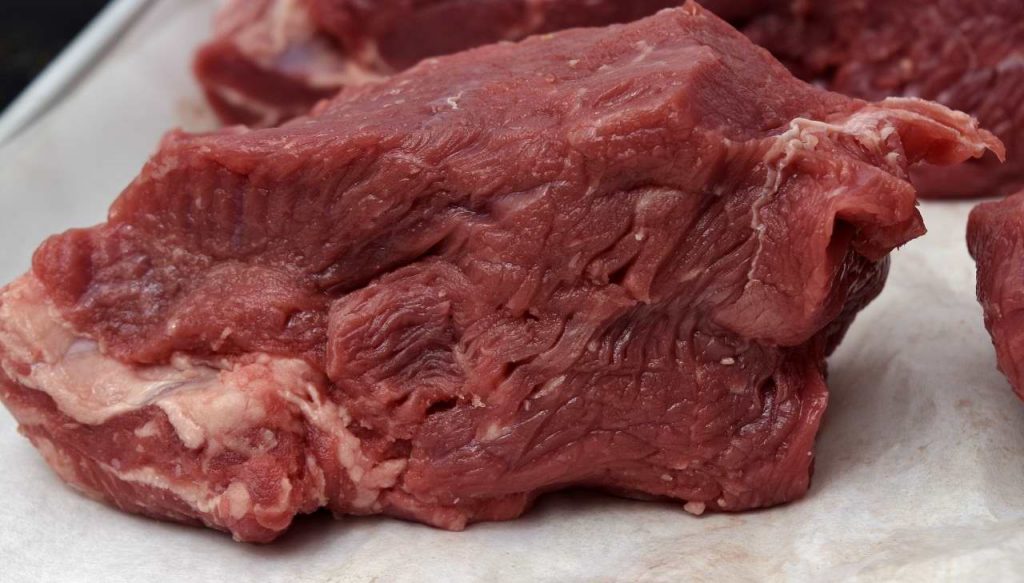
Just as a portion consideration, that amount of meat (without the nerve end that I grind up) is enough to feed 12-14 people, if you carve up the steaks at the table or something like that. That means you paid $5 a person for New York Steak, and you got three pounds of outstanding ground beef for free. That’s why I grind it up. Free meat!
Norm
